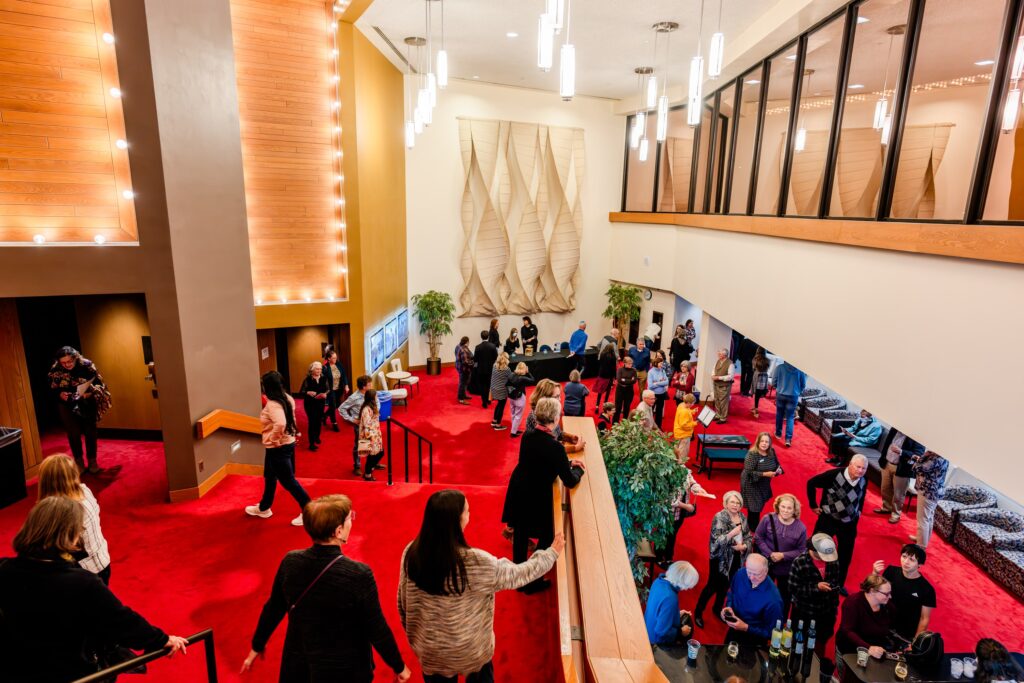Concert Experience
A Few Things Before You Get Here
If you’re reading this page, that means you’re hopefully joining us soon for a concert, and we love that. We care a LOT about growing our audience and making sure people who are newer to classical music and/or orchestra concerts have a great experience so ultimately you come back again. Have a question that’s not answered here? Send us a message on Facebook, Twitter, or email, and we might even add the question to this list.

Where do you perform, exactly?
The Central Wisconsin Symphony Orchestra (CWSO) is based in Stevens Point, with musicians from all over the central Wisconsin area. We are fortunate to be able to perform at Sentry Theater, located at 1800 Northpoint Dr.
What's a good seat?
We get asked this a lot, and most people will tell you that the best location is in the center, not too close to the front as that helps the sound blend a little better by the time it hits your ears, plus you can see more of the players when you’re not right up by the stage, but honestly you will have an amazing experience in any seat in the house. Lastly, if there is a piano soloist performing, people like to sit more towards the left side of the house so that you can see the pianist’s hands as they perform.
What do I wear?
More than anything, we want you to be comfortable when you join us for a concert, so dress in a way that works for you. Some people love dressing up and going out—if that’s you, do it and you won’t be the only one, we promise. If you prefer to be more casual, then you probably won’t be the only one dressed casually, either. In short, you do you, and we’re just glad you’re joining us.
How do I get a drink at the concert?
Sentry Theater offers bar service in the lobby of the theater prior to the concert and during intermission.
How can I study up before I go?
We try to make concerts self-containing, meaning at the performance itself you will learn a little from our CWSOunds magazine program notes as well as from the Maestro as he sometimes briefly introduces the pieces from the stage. If you want to study up ahead of time, we have multiple ways to help you do that:
- The pre-concert talk with the Music Director starts one hour before the performance, is free to concert attendees, and lasts about 30 minutes, so you have a half-hour between the talk and concert to get a drink, use the restroom, mingle, etc. During the talk, Maestro covers topics such as why he programmed the particular pieces on that concert, things you should listen for during the performance, and information about the composers. Often, the soloist performing that date will join the talk for all or part, so you get to hear first-hand from the amazing artist you’re going to see later in the evening.
- Listen to the concert playlist on Spotify. Compiled for you by the CWSO, the playlist is full of top picks of the best recordings of the pieces the orchestra will be performing.
- On each of the concert overview pages on this website, we’ve included each piece’s respective Wikipedia entries.
How long is a concert?
Concerts vary in length depending on how long each piece is in the program but usually range from about 100-120 minutes. Generally, most concerts will open with an overture or other shorter work about 10 minutes or so in length. That’s usually followed by a concerto (a piece with a featured soloist) for another 20-30 minutes, and then comes a 15-minute intermission. The second half of the performance is often a full symphony of multiple movements, totaling 40-60 minutes depending on how long the composer wrote (and how fast the conductor conducts!). This isn’t always the format, and you’ll see that some of our concerts have multiple shorter pieces and no long symphony at all, but it gives you an idea of what to expect, at least in terms of the overall length of the concert.
When do I applaud?
Do you hate phones?
What else should I expect?
Join Our Mailing List
Not getting our emails or mail in your mailbox? Join our Mailing list to make sure you don’t miss a beat!
